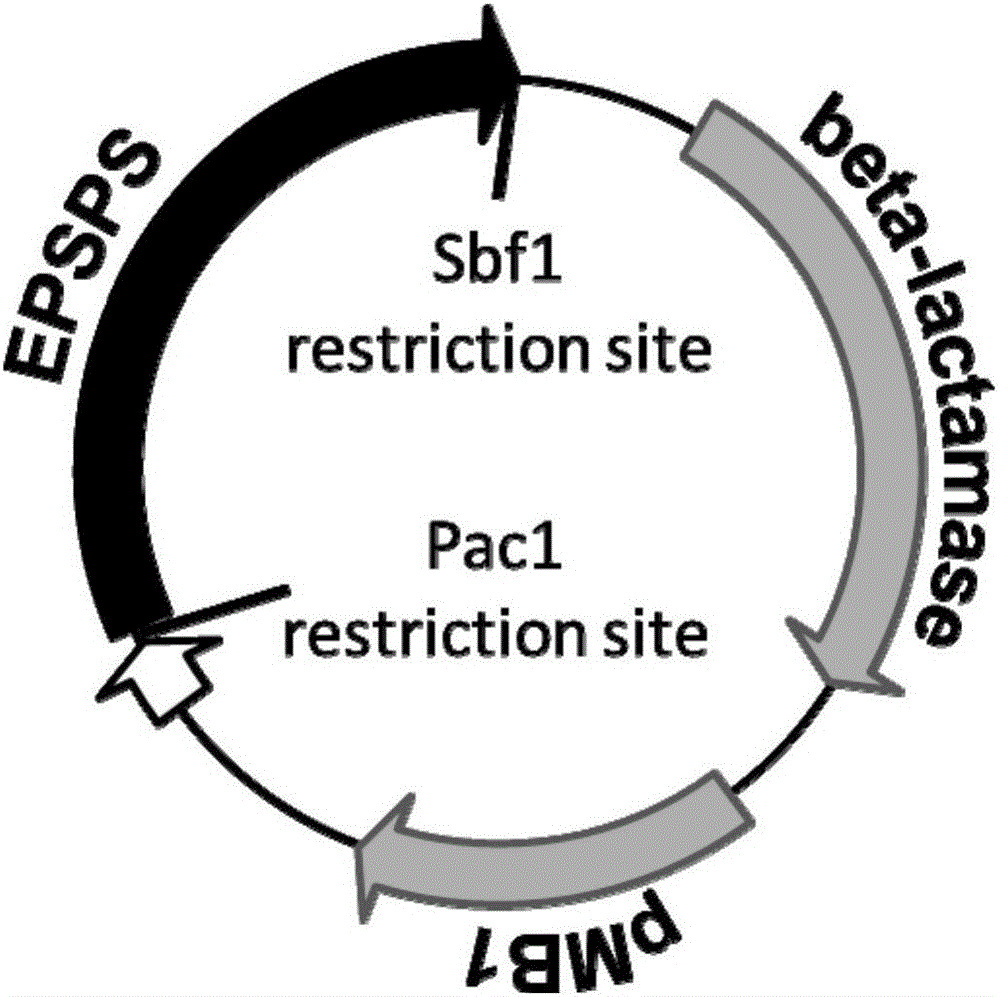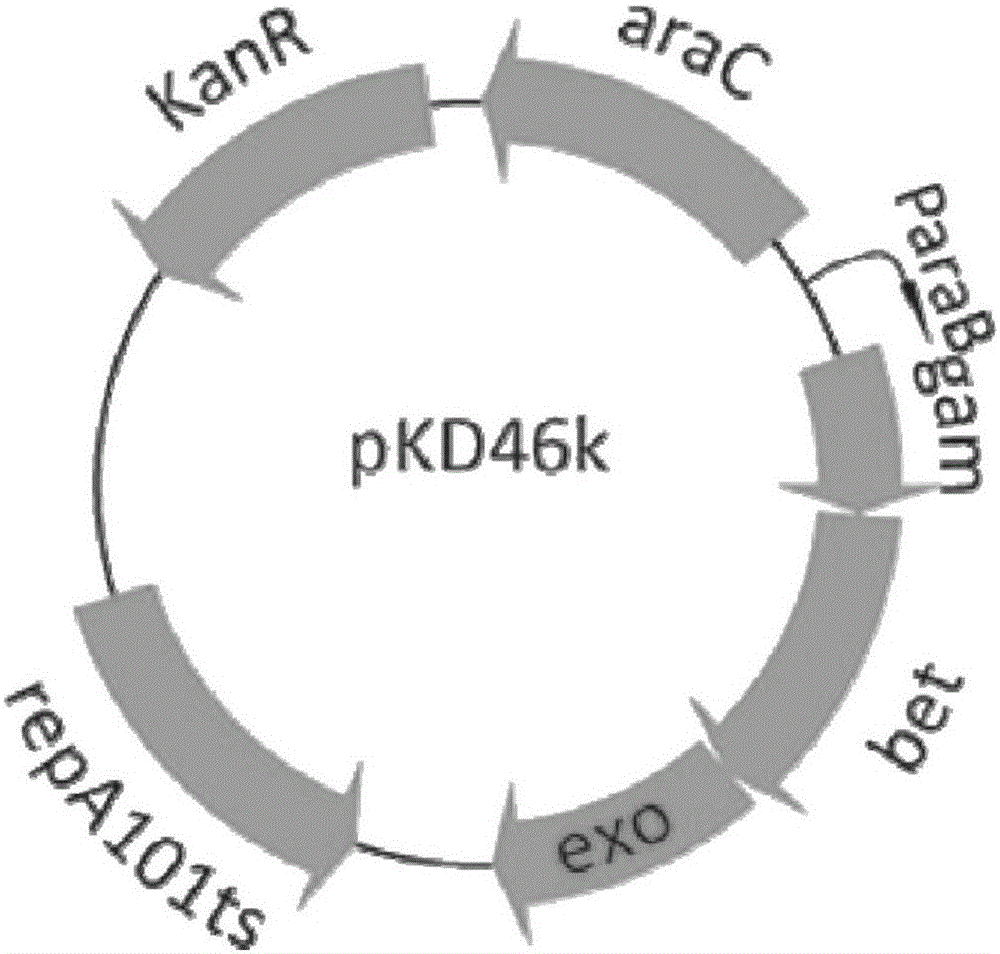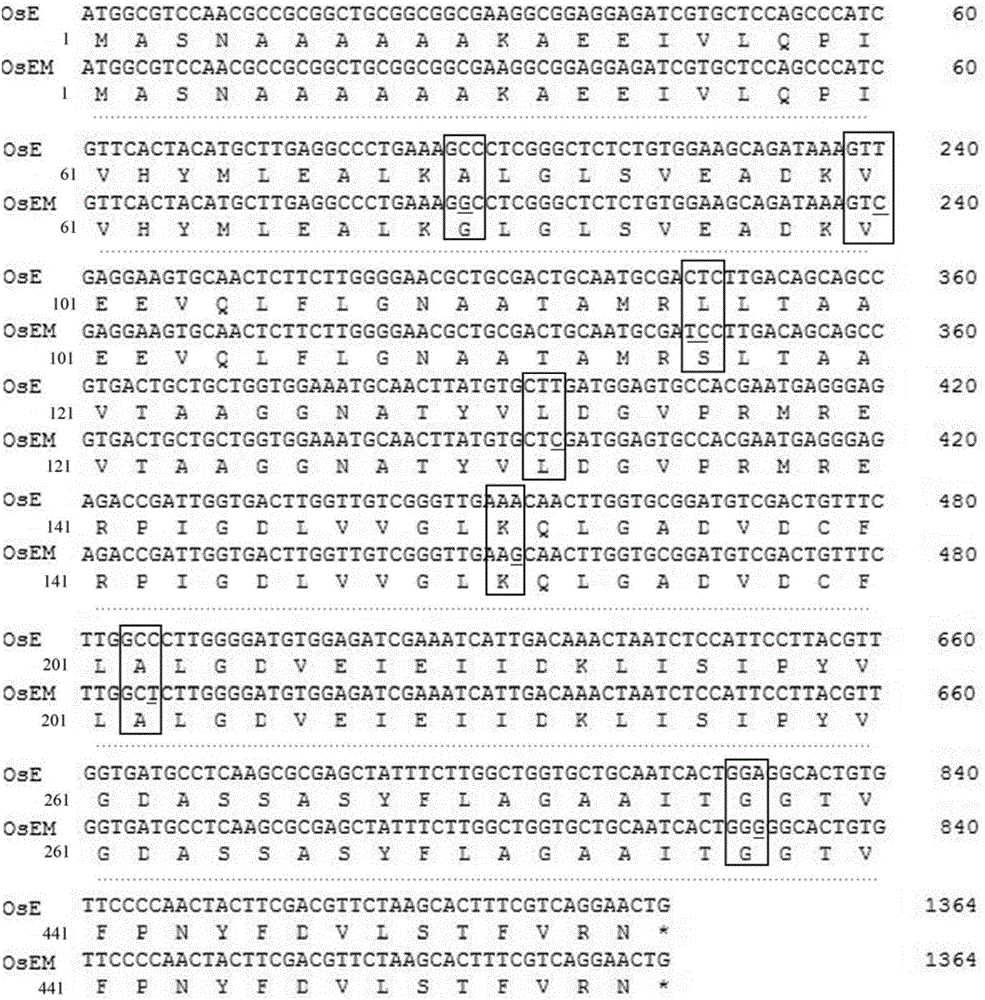Method for screening glyphosate-resistant gene, EPSPS mutant gene, defect strain and application thereof
A screening method and anti-glyphosate technology, applied in the biological field, can solve the problems of long plant growth cycle, large land area, and long time spent on mutant plants, and achieve short cycle, small size, and fast reproduction speed. Effect
- Summary
- Abstract
- Description
- Claims
- Application Information
AI Technical Summary
Problems solved by technology
Method used
Image
Examples
Embodiment 1
[0049] In this embodiment, the target plant is rice (Oryza sativa), the exogenous EPSPS gene is the rice EPSPS gene (its nucleotide sequence is shown in SEQ ID NO.1), and the wild type is knocked out by direct knockout method using homologous PCR fragments The EPSPS and C-P Lyase-deficient strains obtained from the EPSPS gene and C-P Lyase gene in Escherichia coli DH5α are taken as an example to describe the screening method of the present invention in more detail. The names of primers used in this embodiment and their nucleotides See Table 1 for the sequence.
[0050] In the first step, the EPSPS gene and C-P Lyase gene in Escherichia coli DH5α were directly knocked out using homologous PCR fragments.
[0051] 1. Knockout of the C-P Lyase gene of Escherichia coli DH5α
[0052] (1) Homologous PCR fragment amplification
[0053] Use the forward primer CPF2 and the reverse primer CP5HA3 (see Table 1), and use the wild-type Escherichia coli DH5α as a template to carry out PCR, ...
Embodiment 2
[0096] In this embodiment, the target plant is soybean (Glycine max), the exogenous gene is soybean EPSPS gene (its nucleotide sequence is shown in SEQ ID NO.5), and the wild-type gene is knocked out by direct knockout method using the homologous FRT method. The EPSPS and C-P Lyase-deficient strain obtained from the EPSPS gene and C-PLyase gene in Escherichia coli DH5α are taken as an example to illustrate the screening method of the present invention. The names of primers used in this embodiment and their nucleotide sequences are shown in the table 3.
[0097] In the first step, the C-P Lyase gene of Escherichia coli DH5α was knocked out.
[0098] The EPSPS gene and C-PLyase gene in the Escherichia coli DH5α strain were knocked out by using the FRT method in two steps, first knocking out the C-P Lyase gene, and then knocking out the EPSPS gene.
[0099] 1. Preparation of Escherichia coli DH5α competent cells containing pKD46 plasmid
[0100] Take 0.5 μL of pKD46 plasmid (it...
Embodiment 3
[0148] This embodiment provides a deficient strain, specifically, the deficient strain is an EPSPS and C-P Lyase deficient strain. The EPSPS and C-P Lyase-deficient strain is obtained by knocking out the EPSPS gene and C-P Lyase gene of any one of Escherichia coli DH5α, TOP10 and BL21 by gene knockout technology. Specifically, the gene knockout method used in this example is the same as the gene knockout method used in Example 1 or Example 2.
[0149] The EPSPS and C-P Lyase-deficient strains provided in this example can be used in testing the function of EPSPS genes from target plants. Specifically, the EPSPS and C-P Lyase-deficient strains of this example are used as host bacteria, the EPSPS gene of the target plant is introduced into the host bacteria, and then the host bacteria are placed in a basal medium that does not contain amino acids or proteins, that is, restricted If it is observed that there is normal bacterium colony production on the limiting medium, it shows t...
PUM
 Login to View More
Login to View More Abstract
Description
Claims
Application Information
 Login to View More
Login to View More - R&D
- Intellectual Property
- Life Sciences
- Materials
- Tech Scout
- Unparalleled Data Quality
- Higher Quality Content
- 60% Fewer Hallucinations
Browse by: Latest US Patents, China's latest patents, Technical Efficacy Thesaurus, Application Domain, Technology Topic, Popular Technical Reports.
© 2025 PatSnap. All rights reserved.Legal|Privacy policy|Modern Slavery Act Transparency Statement|Sitemap|About US| Contact US: help@patsnap.com



